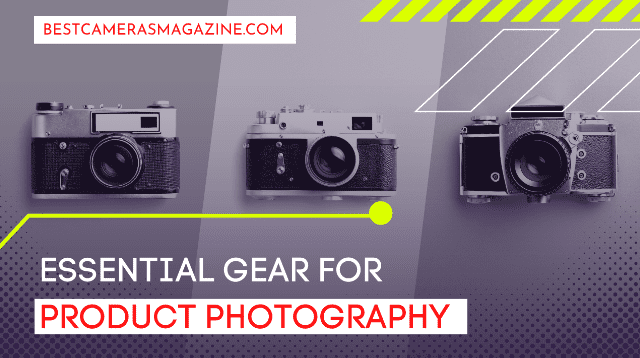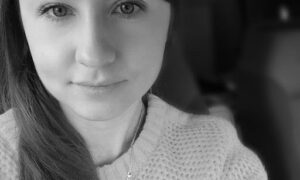Product photography is an excellent opportunity to hone your technical photography skills, learn to be creative in small places, and even earn money without making a large investment. Of course, product photography, like most other types of photography, takes some equipment to get started. You’re not alone in wondering what the best and most crucial product photography equipment is.
Product photography allows budding photographers to master studio and post-production skills from the comfort of their own homes. In reality, the skills required to be a good product photographer also apply to other types of photography! If you can master product photography, you’ll notice benefits in the rest of your work.
Photography may appear to be an expensive pastime – and it is! But it doesn’t have to be that way. You just need a few tools to get started creating outstanding product photography for local and online businesses. For product photography, you’ll need the following tools:
- A good camera setup for product photography
- Proper lighting and studio setup for beginner product photography
- Post-processing tools suited for product photography
Let’s start designing the ultimate product photography gear kit right away!
Camera Setup for Product Photography
The beautiful thing about product photography is that your camera setup isn’t as important as you may assume. As a product photographer, you’ll use a tripod and shoot at tiny apertures. That is, your camera’s sensor resolution and lens will have the greatest impact on the quality of your photographs.
When shopping for the best cameras for product photography setup, aim for one with a sensor larger than 20MP. While larger-size product photography may necessitate a medium format camera with a 50 or 100MP sensor, beginning product photography does not. If you don’t already have one, look for a sturdy, recent-generation APS-C camera with a compatible flash system.
We’ll go into flash systems in more detail later, but first, what exactly is an APS-C camera? APS-C is an abbreviation for Advanced Photo System type-C, which essentially denotes that the sensor in these cameras is smaller than that in a full-frame camera. A smaller sensor means a more affordable and compact camera that takes superb product photographs and is ideal for beginners.
If you already own a DSLR, you will not need to upgrade to begin shooting product photography. Just make sure your firmware is up to date and that the lighting option you choose works properly with your camera.
You may not be the most comfortable with your camera as a novice. That’s fine; camera manufacturers make guides for a purpose! Your camera’s instruction manual is your best buddy. It will teach you how to set up your camera and make changes.
Lens Choices for Product Photography
Whatever digital camera you buy will come with a kit lens, sometimes known as a beginning lens. The kit lens with your camera is a terrific place to start.
If you’re on a tight budget, you may always improve your product photography lens later. When it’s time to replace your lens, consider a medium-zoom lens.
Product photography does not necessitate a fixed aperture, but a lens akin to a standard 24-105mm f/4 is an excellent choice. Any lens that can capture sharp photos at f/8 or f/11 will suffice.
To complete your product photography camera setup, you’ll need three more items:
- Tripod
- Remote shutter
- Lens filters
Tripod
A tripod is necessary for almost any camera setup because it keeps your camera stable and in the proper position to take your image. You’ll likely need to stack exposures in post-production to obtain the ideal exposure level in product photography. That entails taking many shots of the product from the same angle, with modest adjustments in lighting and exposure.
It will be nearly impossible to align your photos in post-production if they are not nicely aligned. A tripod ensures that your photographs are taken from the same vantage position.
Remote Shutter
A remote shutter allows you to take pictures without touching your camera, which might cause a camera to wobble. Remote shutters are inexpensive and extremely useful equipment. If you purchase one, your product photography will thank you!
Alternatively, if you have a modern generation camera, you can link a phone app to function as a remote shutter.
Polarizing Filter
Finally, for product photography, purchase a polarizing filter. This is only required if you intend to shoot glass products such as drink bottles. A polarizing filter reduces glare caused by flash reflection off the glass.
If you wish to use photographic glass products, purchase a lens filter that suits your lens. If you’re still using a kit lens, save up for a good filter until you’ve upgraded to a lens you like so you don’t have to buy another.
Post Processing Essentials for Product Photography
Finding a picture organizer and a photo editor that work for you is the key to post-processing, and two products are essential for your product photography kit. We recommend that you begin your post-processing journey with Adobe Lightroom and Photoshop.
Once you’ve mastered these applications, focus on developing particular skills, such as stacking exposures and layer masking. Learning how to dodge and burn and produce minor touch-ups will also help you when editing professional images.
That’s all there is to it! You’re ready to assemble your product photography gear package and start shooting photos. Need more assistance getting started with your at-home product photography business? Visit our website here at best cameras magazine.



































